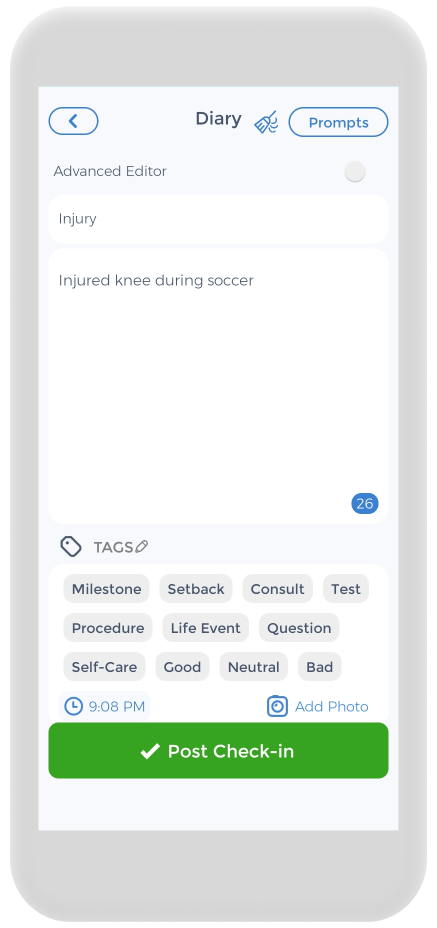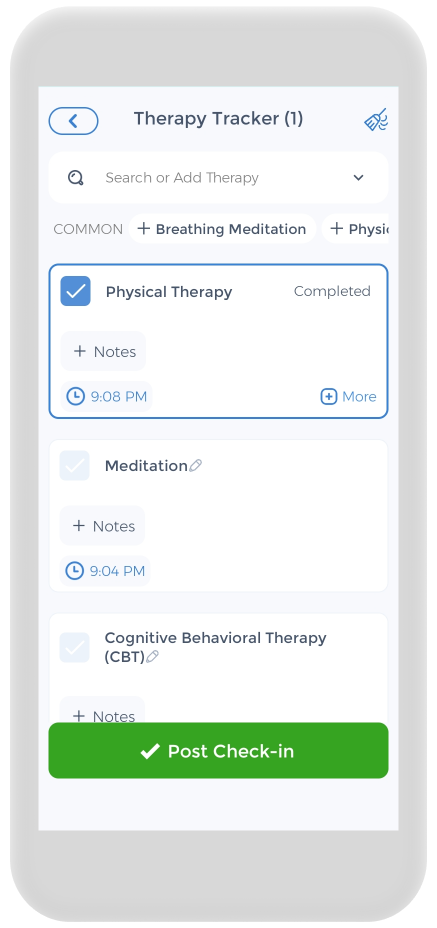
Patellofemoral Pain Syndrome (PFPS) is a common condition that affects the knee joint. It is characterized by pain around one or both knees and behind the kneecap and can be a debilitating condition for those who suffer from it. In this article, we will explore various treatment options for PFPS, ranging from non-surgical to surgical interventions, as well as strategies for preventing and living with the condition. By understanding the causes, symptoms, and available treatments, individuals can make informed decisions about managing and treating PFPS effectively.[1][2][3]
Understanding Patellofemoral Pain Syndrome
Patellofemoral Pain Syndrome, also known as runner’s knee, is a condition that occurs when the patella (kneecap) does not move smoothly within the femoral groove (the groove at the end of the thigh bone). This results in an imbalance in the forces acting of the lower leg and on the patella, leading to irritation, inflammation, and knee pain.
What is Patellofemoral Pain Syndrome?
Patellofemoral Pain Syndrome typically presents as a dull, aching pain in the front of the knee, around or behind the kneecap, on one or both knees. It is most commonly experienced during activities that involve repetitive knee movements, such as running, jumping, or squatting. The pain may be aggravated by sitting with the knees bent for prolonged periods or walking up or down stairs.
When individuals are affected by Patellofemoral Pain Syndrome, they often find themselves struggling to engage in physical activities they once enjoyed. The pain can be debilitating, making it difficult to participate in sports or even perform everyday tasks that require knee movement. As a result, individuals may experience a decrease in their overall physical fitness and a decline in their quality of life.
Causes and Risk Factors
The exact cause of Patellofemoral Pain Syndrome is not fully understood, but several factors can contribute to its development. These include muscle imbalances, overuse, trauma or overuse injury, biomechanical abnormalities, and poor training techniques. Muscle imbalances, for example, can occur when certain muscles around the patellofemoral joint or patellar tendon are weaker or tighter than others, causing the patella to track improperly. Overuse of the knee joint or thigh muscles, especially in activities that involve repetitive movements and the knees bent, can also lead to the development of Patellofemoral Pain Syndrome.
contribute to its development. These include muscle imbalances, overuse, trauma or overuse injury, biomechanical abnormalities, and poor training techniques. Muscle imbalances, for example, can occur when certain muscles around the patellofemoral joint or patellar tendon are weaker or tighter than others, causing the patella to track improperly. Overuse of the knee joint or thigh muscles, especially in activities that involve repetitive movements and the knees bent, can also lead to the development of Patellofemoral Pain Syndrome.
It is important to note that certain risk factors can increase the likelihood of developing PFPS. For instance, being female has been identified as a risk factor, as women tend to have wider hips, which can alter the alignment of the patellofemoral joint. Additionally, individuals with a high body mass index (BMI) are more prone to developing Patellofemoral Pain Syndrome due to the increased stress placed on the knee joint. Lastly, participating in sports that require repetitive knee movements, such as running, basketball, or soccer, can also increase the risk of developing PFPS.
Symptoms and Diagnosis
In addition to knee pain, other common symptoms of PFPS include swelling, a grinding or popping sensation when bending the knee, and difficulty performing activities that involve knee flexion. The pain and discomfort can be intermittent or constant, depending on the severity of the condition. Individuals may also experience stiffness in the patellofemoral joint, making it challenging to fully extend or flex the knee.
Diagnosing Patellofemoral Pain Syndrome typically involves a comprehensive physical examination by a healthcare professional. During the physical examination, the healthcare professional will assess the alignment of the patella, check for any signs of inflammation or swelling, and evaluate the strength and flexibility of the surrounding muscles. They will also review the patient’s medical history, including any previous injuries or conditions that may contribute to the development of PFPS.
In some cases, imaging tests may be ordered to rule out other potential causes of knee pain. X-rays can help identify any structural abnormalities or signs of arthritis, while an MRI can provide a more detailed view of the soft tissues in the knee joint. The physical examination and tests can assist in confirming the diagnosis of Patellofemoral Pain Syndrome and ruling out other conditions that may require different treatment approaches.[4][5]
Non-Surgical Treatment Options
Fortunately, many individuals with Patellofemoral Pain Syndrome can find relief through non-surgical treatment options. These approaches focus on addressing the underlying causes of the condition, improving joint mechanics, and relieving pain and inflammation.
Patellofemoral Pain Syndrome, also known as runner’s knee, is a common condition that causes anterior knee pain. It is often caused by overuse, improper alignment of the patella, weak or imbalanced muscles, or biomechanical issues.
While surgery may be necessary in some cases, non-surgical treatment options are typically the first line of defense. These options aim to alleviate anterior knee pain, improve function, and prevent further damage to the knee joint.
Physical Therapy and Rehabilitation
Physical therapy is a cornerstone of non-surgical treatment for PFPS. A qualified physical therapist can develop a tailored rehabilitation program that includes hip and knee exercises to strengthen the muscles surrounding the knee, improve flexibility, and correct any muscle imbalances or faulty movement patterns.
develop a tailored rehabilitation program that includes hip and knee exercises to strengthen the muscles surrounding the knee, improve flexibility, and correct any muscle imbalances or faulty movement patterns.
During physical medicine sessions, the therapist may use various techniques and specific exercises to address the specific needs of the individual. These may include manual therapy, such as massage or joint mobilizations, to relieve pain and improve joint mobility. Taping or bracing may also be utilized to provide support and promote proper alignment of the patella.
Additionally, physical therapists may incorporate modalities such as ultrasound or electrical stimulation to provide temporary anterior knee pain relief and aid in the healing process.
Pain Management Techniques
To alleviate anterior knee pain and inflammation associated with PFPS, various pain management techniques can be employed. These pain relievers may include the use of ice or cold packs with the knees flexed, which can help reduce pain and swelling and numb the area. Nonsteroidal anti-inflammatory drugs (NSAIDs) may also be recommended by a healthcare provider to help decrease pain and inflammation.
For individuals who prefer a more natural approach, the application of topical analgesics, such as creams or gels containing menthol or capsaicin, can provide localized pain relief. These products work by desensitizing the nerves in the area and reducing the perception of pain.
It is important to note that pain management techniques should be used in conjunction with other treatment modalities and under the guidance of a healthcare professional.
Lifestyle Changes and Home Remedies
In conjunction with professional treatment, individuals can make lifestyle changes and incorporate home remedies to help manage Patellofemoral Pain Syndrome.
Rest and activity modifications are crucial in allowing the knee joint to heal and reducing stress on the affected area. This may involve temporarily losing weight, avoiding activities that exacerbate the pain, such as running or jumping, and focusing on low-impact exercises, such as swimming or cycling, to maintain cardiovascular fitness.
Using supportive footwear and orthotics can also play a significant role in promoting proper alignment and reducing excessive stress on the knee joint. These devices provide additional cushioning and support, helping to distribute forces evenly and prevent further irritation.
Furthermore, adopting exercises to strengthen the hips and core muscles can help stabilize the knee and improve overall biomechanics without knee braces. Strong hip and core muscles can help reduce excessive stress on the knee joint and improve its alignment during movement.
Home remedies such as applying heat or using foam rollers for self-massage can also provide temporary relief and promote relaxation of the muscles surrounding the knee.
It is important to consult with a healthcare professional or physical therapist before implementing any lifestyle changes or home remedies to ensure they are appropriate for your specific condition.[6][7]
Surgical Treatment Options
In cases where non-surgical interventions fail to provide sufficient relief, surgical treatment options may be considered. These interventions are aimed at reducing pain and at correcting any structural abnormalities or damage that may be contributing to the condition.
Surgical treatment options for patellofemoral pain syndrome (PFPS) include arthroscopy, realignment surgical procedures, and a comprehensive recovery and rehabilitation program.
Arthroscopy for Patellofemoral Pain Syndrome
Arthroscopy is a minimally invasive surgical procedure that allows direct visualization of the joint and the removal of any damaged cartilage or tissues. It may be used to diagnose and treat patellofemoral pain by smoothing roughened surfaces, repairing or removing damaged tissues, and controlling excessive synovial fluid production.
During arthroscopy, a small incision is made near the affected joint, and a tiny camera called an arthroscope is inserted. The surgeon can then examine the joint and perform necessary repairs using specialized instruments. This procedure is less invasive than traditional open surgery, resulting in smaller incisions, less scarring, and a quicker recovery time.
After arthroscopy, patients typically require a period of rest and immobilization to allow the joint to heal. Physical therapy is an important component of the recovery process, as it helps restore range of motion, strength, and function.
Realignment Procedures
In some cases, realignment procedures may be necessary to correct abnormal patellar tracking or address underlying biomechanical issues. These procedures involve altering the alignment of the patella and the structures that support it, such as the ligaments and tendons, to improve joint mechanics and alleviate pain.
One common realignment procedure is a lateral release, which involves releasing tight structures on the outer side of the patella to allow it to track properly. Another procedure, called a tibial tubercle osteotomy, involves repositioning the attachment point of the patellar tendon to realign the patella.
Realignment procedures are typically performed under general anesthesia and may require a longer recovery period compared to arthroscopy. Physical therapy is crucial for optimizing outcomes and ensuring a successful recovery.
Recovery and Rehabilitation Post-Surgery
Following surgical intervention, a comprehensive rehabilitation program is essential for a successful patellofemoral pain recovery. This typically involves a period of immobilization, followed by gradual mobilization, strengthening exercises, and functional rehabilitation. Physical therapy plays a crucial role in restoring range of motion, strength, and function, and may be necessary for several months after surgery.
The rehabilitation program is tailored to each individual’s specific needs and may include exercises to improve quadriceps and hip strength, flexibility training, specific exercises, balance exercises, and gait training. The goal is to gradually increase activity levels while ensuring proper healing and minimizing the risk of complications.
In addition to physical therapy, pain management strategies, such as medication and ice therapy, may be used to alleviate discomfort during the recovery period. Close monitoring by the surgical team and regular follow-up appointments are important to track progress and address any concerns or complications that may arise.
With proper adherence to the rehabilitation program and guidance from healthcare professionals, individuals can expect to regain function and resume their normal activities, free from the limitations and pain associated with PFPS.
Preventing Patellofemoral Pain Syndrome
While some individuals may be predisposed to developing Patellofemoral Pain Syndrome, some strategies can help prevent its occurrence or recurrence.
Patellofemoral Pain Syndrome, also known as runner’s knee, is a common knee condition that causes pain around the patellofemoral joint and kneecap. It often occurs due to overuse or misalignment of the patella, the small bone that covers the front of the knee joint.
Fortunately, there are various preventive measures that individuals can take to reduce the risk of developing Patellofemoral Pain Syndrome and maintain optimal knee health.
Importance of Regular Exercise
 Regular exercise plays a crucial role in preventing Patellofemoral Pain Syndrome. Engaging in exercises that target the muscles surrounding the knee, such as quadriceps and hamstrings, can help build strength and stability in the joint. Strong muscles provide better support to the patella, reducing the risk of misalignment and pain.
Regular exercise plays a crucial role in preventing Patellofemoral Pain Syndrome. Engaging in exercises that target the muscles surrounding the knee, such as quadriceps and hamstrings, can help build strength and stability in the joint. Strong muscles provide better support to the patella, reducing the risk of misalignment and pain.
Incorporating low-impact activities like swimming, cycling, or using an elliptical machine can also be beneficial. These exercises are gentle on the knees and hip muscles while still providing cardiovascular benefits. Additionally, cross-training, which involves alternating between different types of exercises, can help prevent overuse injuries and maintain overall joint health.
It is important to note that individuals should gradually increase the intensity and duration of their exercise routine to avoid straining the knee joint. Consulting with a healthcare professional or a certified trainer can guide appropriate exercises and training programs.
Appropriate Footwear and Orthotics
Wearing appropriate footwear is crucial in preventing patellofemoral pain knee pain and injury. Athletic shoes that provide proper support and shock absorption can help reduce the impact on the knee joint during physical activities. It is recommended to choose shoes specifically designed for the intended activity, whether it be running, hiking, or playing a sport.
In some cases, individuals may have foot or gait abnormalities that contribute to the development of Patellofemoral Pain Syndrome. Custom orthotics or shoe inserts can be beneficial in correcting these abnormalities and providing additional support to the feet and knees. These orthotics are designed to align the feet properly, reducing stress on the knee joint and preventing pain.
It is advisable to consult with a podiatrist or a healthcare professional specialized in foot biomechanics to determine the most suitable orthotics for individual needs.
Maintaining a Healthy Weight
Maintaining a healthy body weight is not only important for overall well-being but also for joint health, particularly the knees. Excess weight places additional stress on the knee joint, increasing the risk of developing Patellofemoral Pain Syndrome.
Adopting a balanced diet that includes a variety of nutrient-rich foods and engaging in regular physical activity can help individuals achieve and maintain a healthy weight. This combination helps to reduce the strain on the knees and decreases the risk of developing knee pain and injuries.
In addition to exercise, individuals can incorporate other healthy habits into their lifestyle, such as staying hydrated, getting enough sleep, and managing stress levels. These factors contribute to overall joint health and can further reduce the risk of developing Patellofemoral Pain Syndrome.
By implementing these preventive measures, individuals can significantly reduce the likelihood of experiencing Patellofemoral Pain Syndrome and enjoy an active and pain-free lifestyle.
Using the CareClinic App to Manage Pain
Keeping a pain journal is good for your health, and the CareClinic app can help you do it. The app can also be used as a clinical and health journal. Simply keep a pain log on the app and note your daily symptoms, meds, and triggers. Other software components are devoted to keeping track of each of them. This can assist you in recognizing early-warning symptoms. If you have chronic low back pain, neck discomfort, acute injuries or traumatic injuries, common knee injuries, autoimmune disease, acute inflammation, meniscus tear, or reactive arthritis, the app is designed to help you improve your chronic low back pain and acute pain-related health.
The app also has a medication section where you can precisely track the pain therapies you are undergoing, whether it be superficial heat, spinal manipulation, relaxation therapy, or transcutaneous electrical nerve stimulation. Hopefully, having all this information handy will help you with treating chronic pain conditions and live pain-free.
Sources
- https://www.ninds.nih.gov/health-information/disorders/pain
- https://painbc.ca/health-professionals/education/OT-workshop
References
- “Patellofemoral Pain Syndrome (Runner's Knee) | Mass General Brigham”. https://www.massgeneralbrigham.org/en/patient-care/services-and-specialties/sports-medicine/conditions/knee/patellofemoral-pain-syndrome
- “Patellofemoral Pain Syndrome (PFPS): Symptoms & Treatment”. https://my.clevelandclinic.org/health/diseases/17914-patellofemoral-pain-syndrome-pfps
- “Patellofemoral pain syndrome – Diagnosis and treatment – Mayo Clinic”. https://www.akamai.mayoclinic.org/diseases-conditions/patellofemoral-pain-syndrome/diagnosis-treatment/drc-20350797
- “Patellofemoral Pain Syndrome (Runner's Knee) | Johns Hopkins Medicine”. https://www.hopkinsmedicine.org/health/conditions-and-diseases/patellofemoral-pain-syndrome-runners-knee
- “Patellofemoral pain syndrome”. https://fittoplay.org/body-parts/knee/patellofemoral-pain-syndrome/
- “Nonsurgical Management of Knee Pain in Adults | AAFP”. https://www.aafp.org/pubs/afp/issues/2015/1115/p875.html
- “PROXIMAL EXERCISES ARE EFFECTIVE IN TREATING PATELLOFEMORAL PAIN SYNDROME: A SYSTEMATIC REVIEW – PMC”. https://pmc.ncbi.nlm.nih.gov/articles/PMC3811739/
- “Patellofemoral Pain Syndrome – OrthoInfo – AAOS”. https://orthoinfo.aaos.org/en/diseases–conditions/patellofemoral-pain-syndrome/
- “Preventing Future Patellofemoral Pain | Patient Education | UCSF Medical”. https://www.ucsfhealth.org/education/preventing-future-patellofemoral-pain
- “Conquering Patellofemoral Pain Syndrome: Comprehensive Management Strategies – Plancher Orthopaedics”. https://plancherortho.com/conquering-patellofemoral-pain-syndrome-comprehensive-management-strategies/
- “Patellofemoral Pain Syndrome: A Review and Guidelines for Treatment | AAFP”. https://www.aafp.org/pubs/afp/issues/1999/1101/p2012.html


